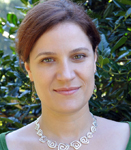
Advocating Open Access: Information Has the Power to Save Lives
This post was originally published on the IntraHealth International blog.
To mark t he beginning of Open Access Week, a global event now in its fifth year, which promotes open access as a new norm in scholarship and research, we started thinking about the concept of “open.” Google defines it as:
he beginning of Open Access Week, a global event now in its fifth year, which promotes open access as a new norm in scholarship and research, we started thinking about the concept of “open.” Google defines it as:
Allowing access, passage, or a view through an empty space; not closed or blocked up: ‘the door was wide open.’
IntraHealth has long championed the importance of health workers and managers having open access to information, particularly in developing countries. Open access is a natural extension of that work. As we blogged last spring, readily available and accessible information can help health workers save lives.
Sometimes it is the prohibitively high cost of access to research journals that makes it hard for health workers, particularly those in developing countries, to use this information. But there are also other concerns: access to continuing education, language, connectivity, and information literacy, to name only a few. Open access advocates should be looking at all these barriers to information in their advocacy efforts.
A two-w ay exchange
ay exchange
One important consideration in discussing open access is whether the information is available through a two-way exchange—can you access my information and can I access yours? In the global health discipline, traditional forms of scholarship tend to overlook the experiential knowledge of those applying research findings in the field. Too often, this means the flow of information is from scholars to health workers on the frontlines but not enough in the reverse direction.
As Pape Gaye, IntraHealth’s president and CEO, recently articulated in his blog about IntraHealth’s commitment to catalyzing the next generation of tech savvy health workers, what is needed is a shift from open access to open participation of the health workforce in consuming and generating global health information, especially the workforce in developing countries.
We are starting to see a more participatory and open approach in some of the exciting and innovative mHealth initiatives that use mobile technology to surmount the traditional barriers—such as connectivity and geography—which can limit free health information flow. Although it is still true that the vast majority of online content originates in the West, social media, growing broadband access, and mobile devices are providing the tools to revolutionize this. According to a World Health Organization report, there are currently “Five billion wireless subscribers, and over 70% of them reside in low- and middle-income countries.” The recent surge in multimedia tools is a wonderful opportunity to support and share voices from cultures with rich oral and visual traditions and/or low literacy rates.
A vision for the future of open access
In support of Open Access Week, we’d like to share with you a vision for the future and in support of free information flow.
IntraHealth’s capstone open access product, the Human Resources for Health (HRH) Global Resource Center (GRC), is a great example to consider. The GRC is a digital library, built with open source software, dedicated to providing free access to resources on the topic of human resources for health in developing countries. The GRC aggregates resources, many from open access journals, and provides easy-to-use searching and browsing tools. More than 65,000 users from 172 countries visit the site each month.
Recently, the GRC added an eLearning component, offering free courses that open up access to training as well as content. More than 200 individuals from 35 countries signed up to take the first course within three weeks of its launch, substantiating the existence of a strong and growing demand for free, high-quality resources and training on HRH topics.
While the GRC is a very successful open digital library, we are asking ourselves, could it be more open or more accessible? Could it be mobile? Could it invite open participation? What is our vision for the future?
Imagine a nurse in a rural clinic, trying to supervise many community health workers.
Imagine she uses her mobile phone to find a simple supervisory checklist on the GRC. She modifies it to fit her local context, and the tool helps her focus and improve her brief supervisory visits.
Now, imagine she submits the revised checklist to the GRC along with a two-minute video describing how she uses it. The GRC manager tweets it as a great example of open content.
Another nurse in a rural community sees it, downloads it, and translates the checklist into her local language. A global health educator notices this activity and develops an eLearning course on effective supervision of community health workers in rural areas. She shares the now multiple versions of this checklist with her students.
Imagine that health workers could take this course on a mobile device translated into their native languages. With open access and participation, this is all possible. Use the comments to share your own vision for or experience with open participation.
Related items:


